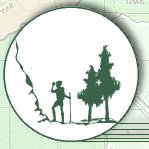Wilderness center helps put
climbers on top
Daily News – Monday June 25,
2001PALMDALE - Palmdale resident Nancy
Rosas and Jay Lariviere of Long Beach spent 13
days trekking through the Andes on a quest to
conquer 22,880-foot Mount Aconcagua in Argentina.
Rosas, 38,
experienced early symptoms of altitude sickness
at 14,000 feet, but there was a doctor present
and she managed to continue the climb after three
days of rest and medication.
"You have to
go slow to get acclimated to the altitude. When
we got up there and were dealing with the
elements ... we covered too much altitude in too
short of a time. So I got altitude sickness,
" Rosas said.
Two days later at
18,000 feet she again experienced early symptoms
of pulmonary edema and had to quit the climb.
While Lariviere
continued on to the summit, Rosas established a
base camp at the 14,000-foot level, where she
maintained a communications link with Lariviere.
"You're not
supposed to cover more than 2,000 feet per-day,
and we actually covered 6,000 in 24 hours"
Rosas said.
Altitude sickness
consists of pulmonary and coronary edema, a
buildup of fluid in the lungs or brain.
The second time
Rosas experienced altitude sickness she said it
totally drained her of energy and she had no
choice but to quit the climb.
Altitude sickness
can affect anyone, regardless of physical
condition, climbers say.
"Altitude is
tough," concluded Lariviere. -It helps when
you know what you're doing in the way of food,
water and shelter."
Lariviere shows
promise and the ability of becoming a world-class,
freestyle climber, said Lee Bergthold, director
of the Center for Wilderness Studies.
"He's always
been a top contender," Bergthold said.
"He has the physical strength and agility to
move well in tough places like severe ridgelines,
walls and cliffs."
"We do a lot
of stuff with Lee locally," Rosas said.
"He takes you to places that, once he's
gone, it's gonna be lost."
Rosas had done
occasional hikes but became hooked on climbing in
the summer of 1999 when she took her first 10-day
trip with Bergthold. "I found something that
I really loved, and that was it for me,"
Rosas said. "The allure is that you're
focused on living and surviving on your own."
During the past
year, Lariviere successfully completed the
summits of four of Mexico's highest peaks ranging
from 15,000- to 18,000-foot elevations.
Rosas said she does
one mountain climb a year. Last year it was Machu
Pichu and come February it will be Aconcagua,
once again. Lariviere is aiming for Kilimanjaro
in Africa with a peak of 19,241 feet.
Rosas came to
Bergthold through a program sponsored by the Los
Angeles County Probation Department, dubbed Reach
for a Mountain.
The program caters
to youths in danger of failing into crime and
drugs. They make short-term backcountry treks
guided by Bergthold and accompanied by probation
officers.
Bergthold trains
and leads hand-picked trekkers into the more
remote areas of the Southwest: Death Valley to
the sea; northern Nevada to the Mexican border-,
the Superstition Mountains and Grand Canyon to
the east; the Great Basin to the Mojave Desert,
and all points between.
Participants in the
Center for Wilderness Studies program work
through a series of required physical levels in
order to finally become involved in long haul,
seven- to I O-day treks.
"I just guide
and direct," Bergthold said. "The rest
is up to those who can focus; to those of a mind-set
geared toward basic survival."
When Bergthold does
solo work, often for periods of up to 10 days,
then resupply becomes necessary.
"Finding
water, staying warm or cool, and finding your way
without a compass is expected," Bergthold
said. "A lot of the times you make your own
rules."
|










